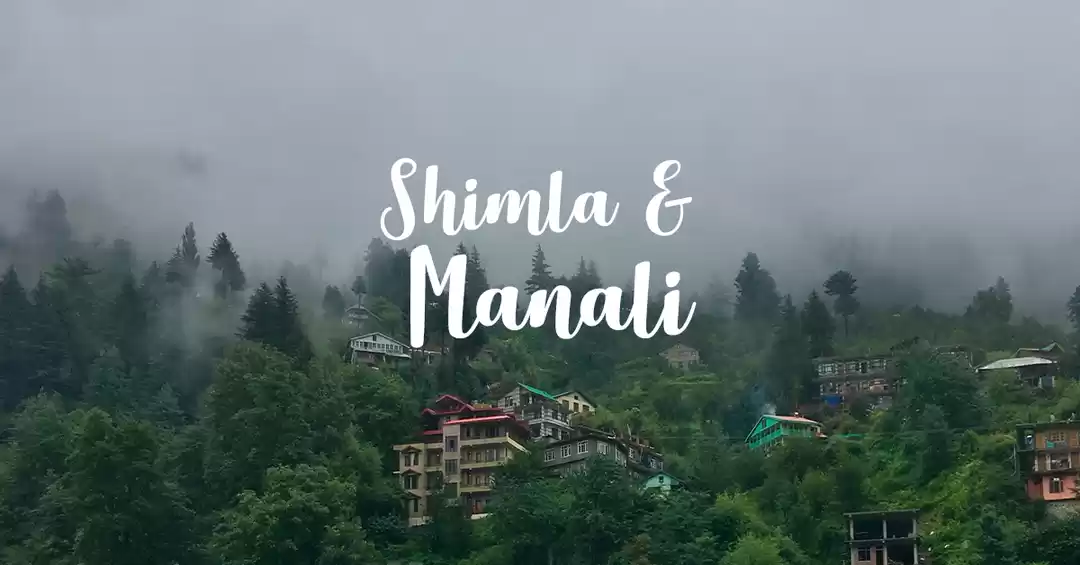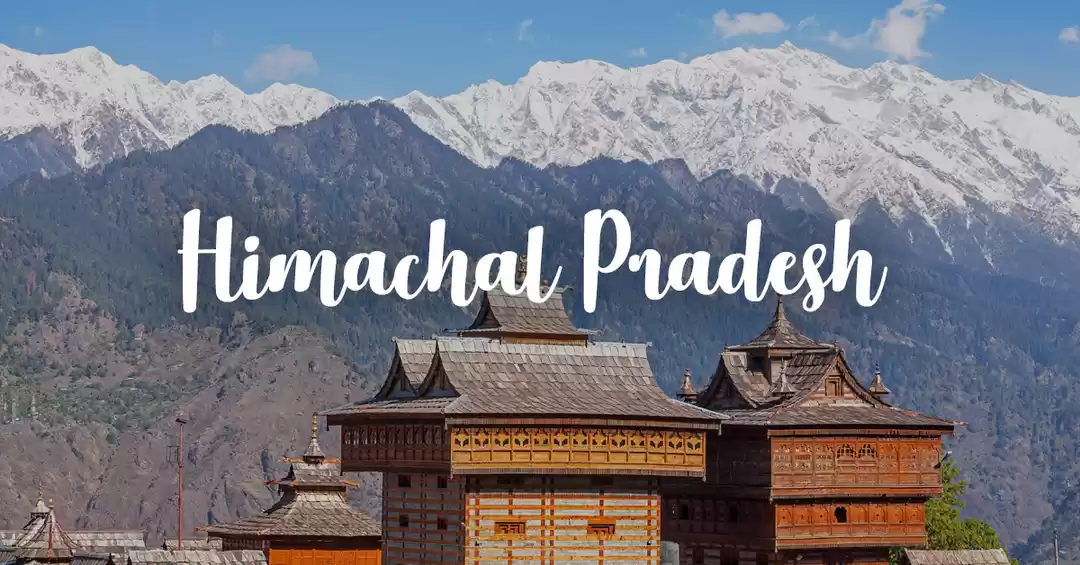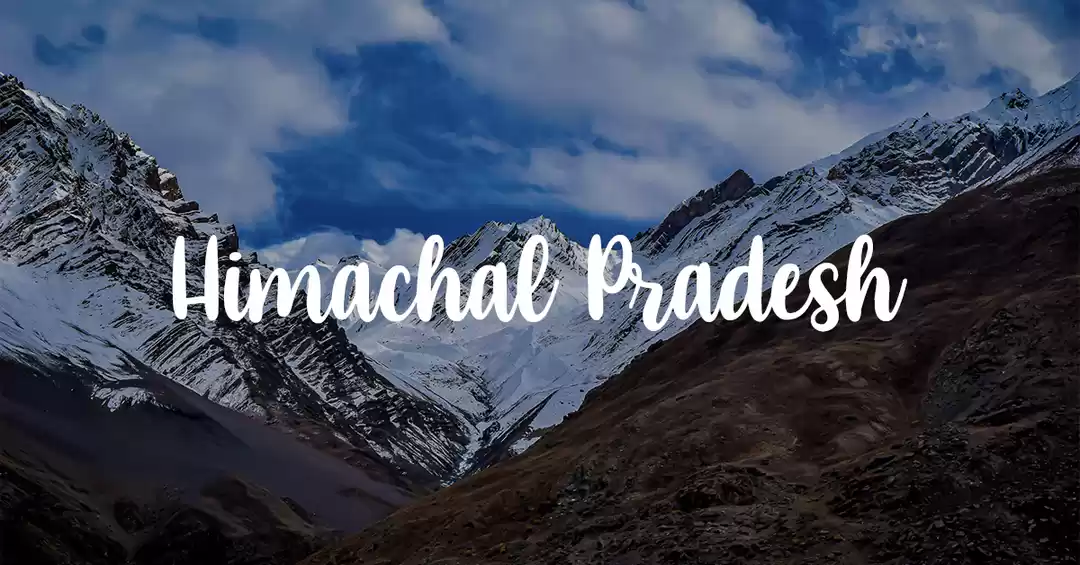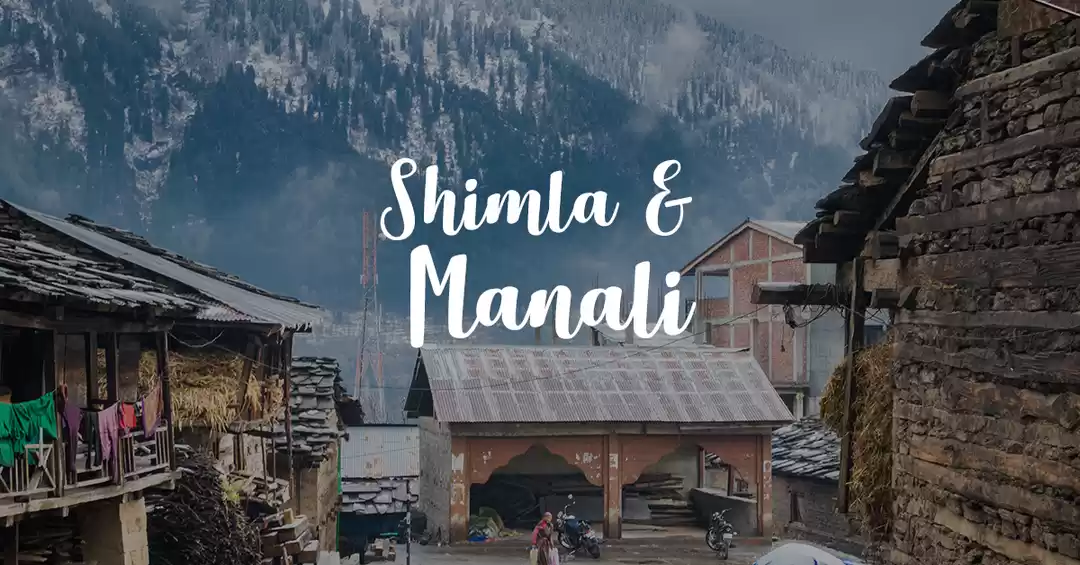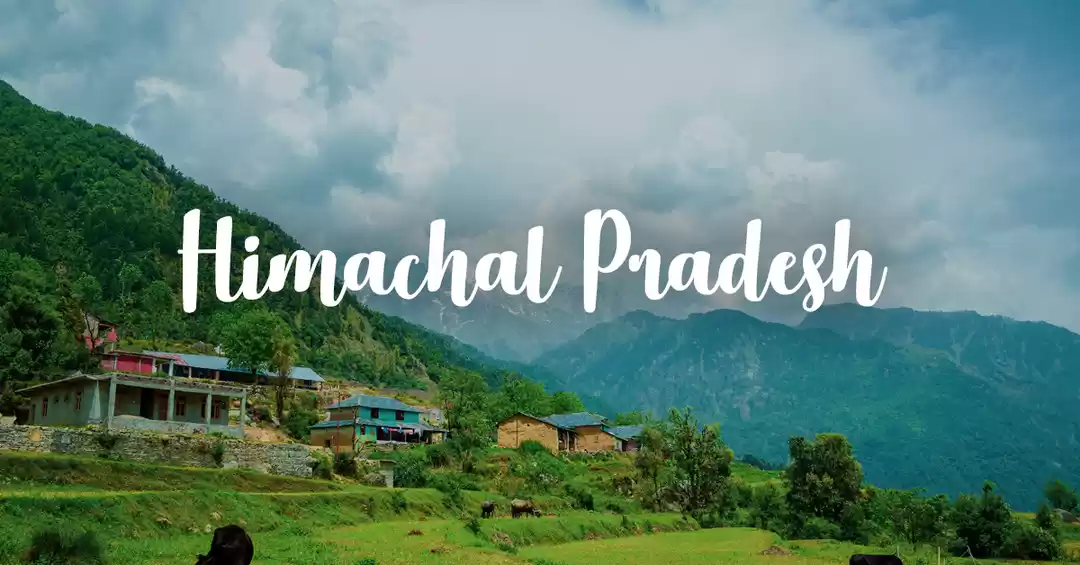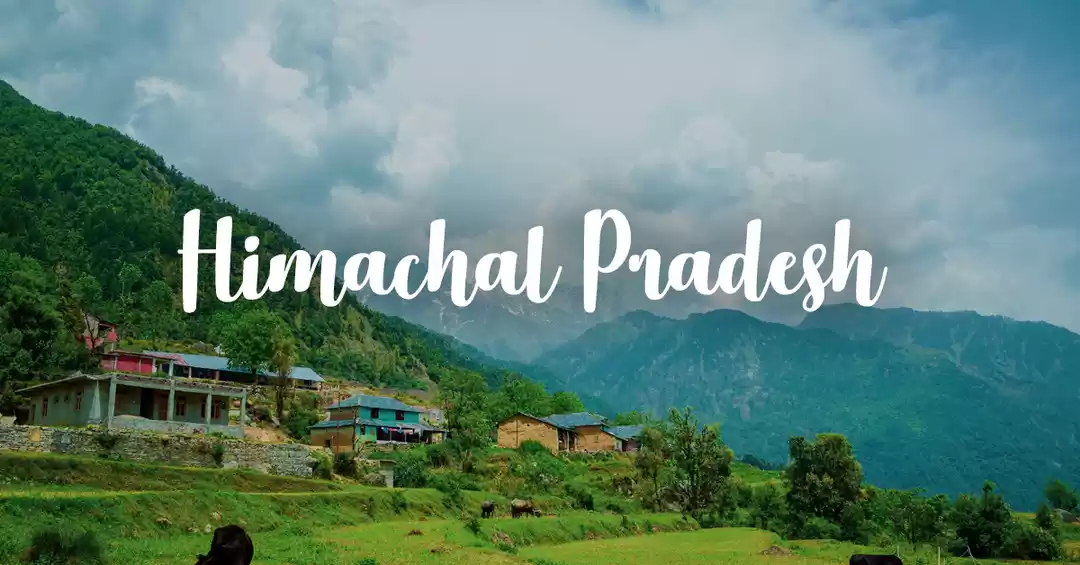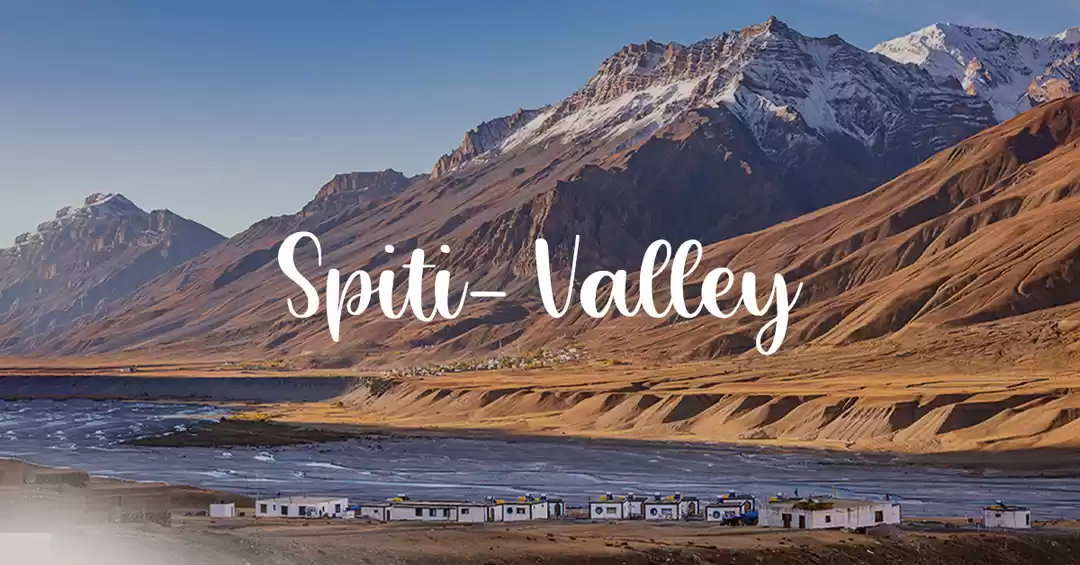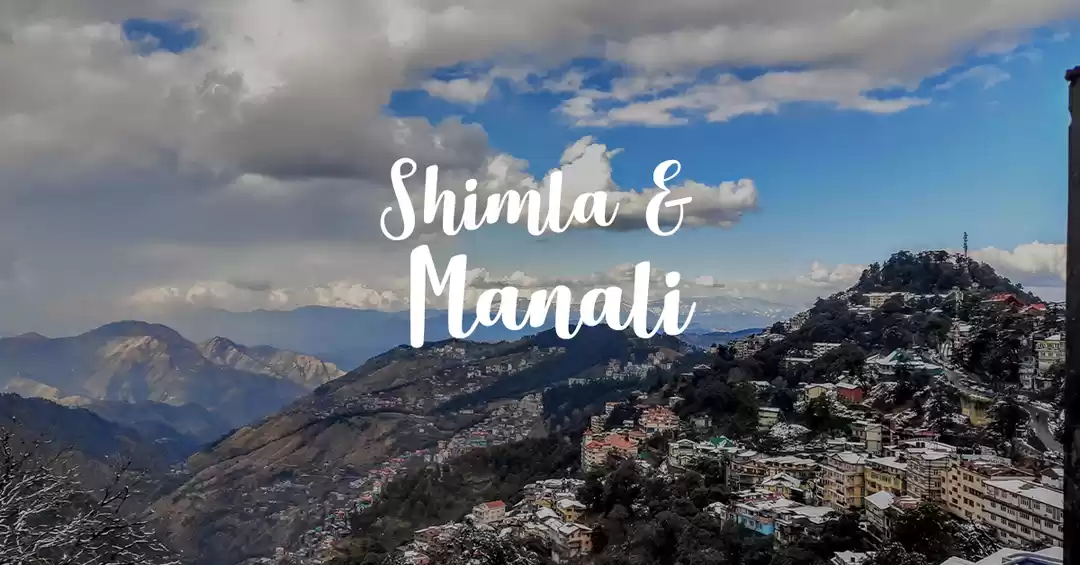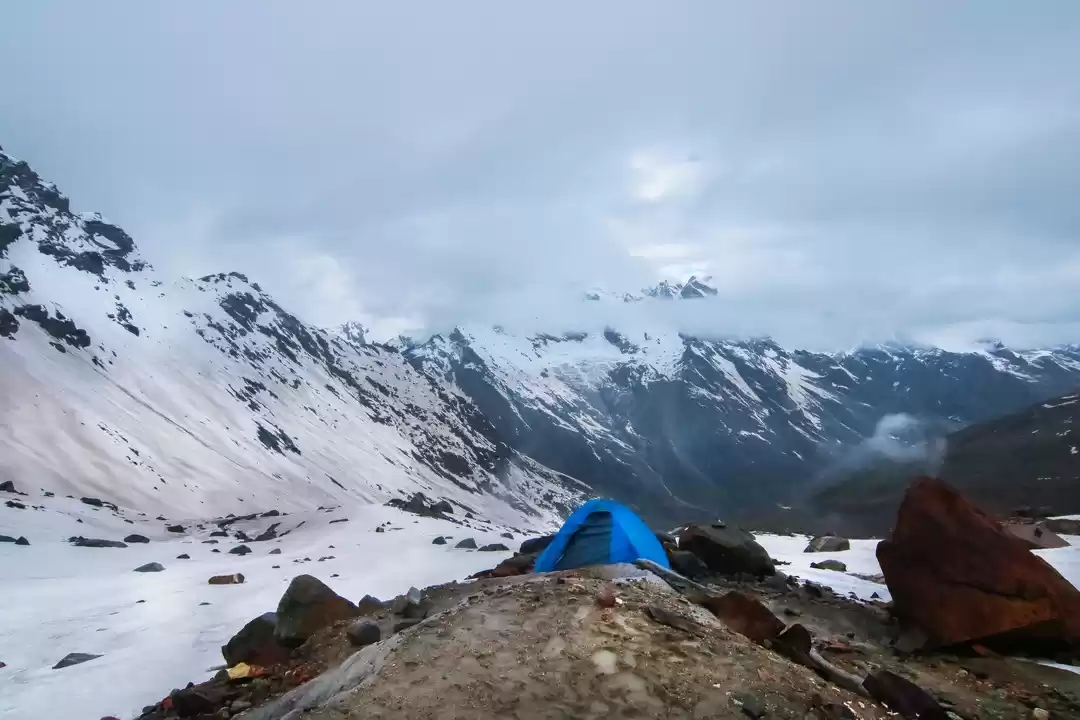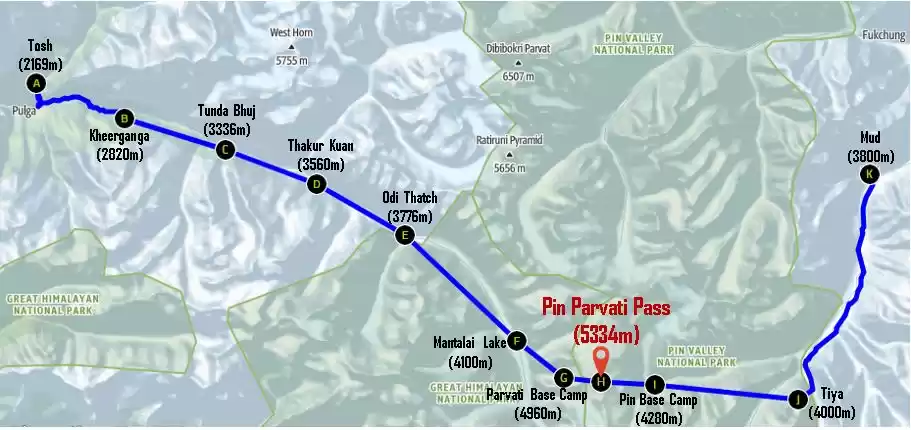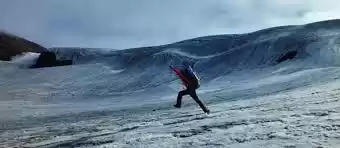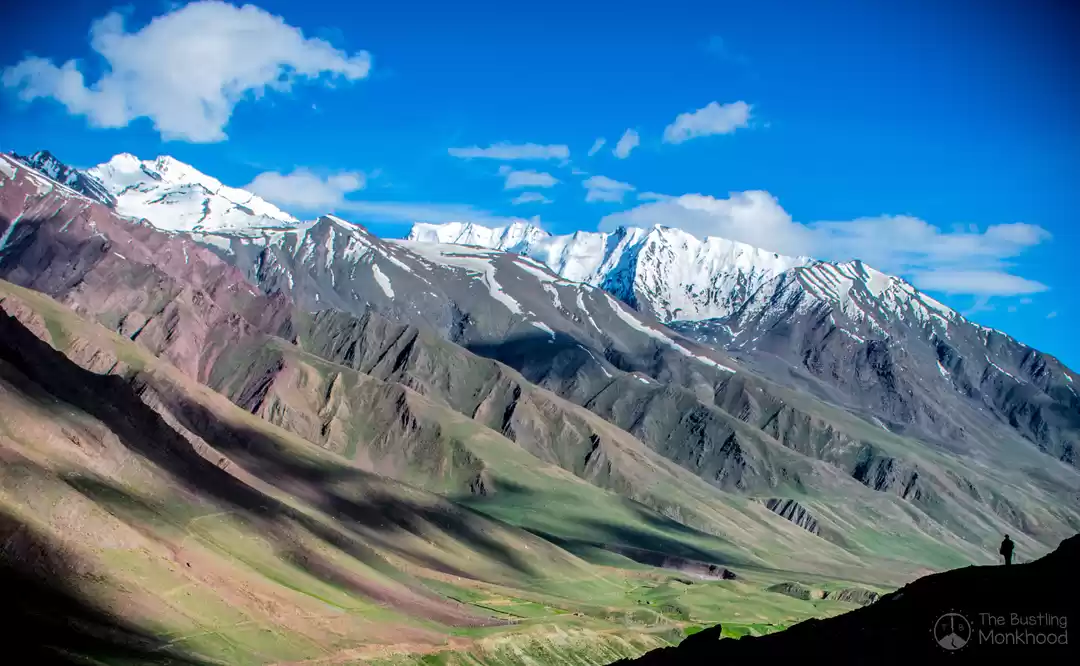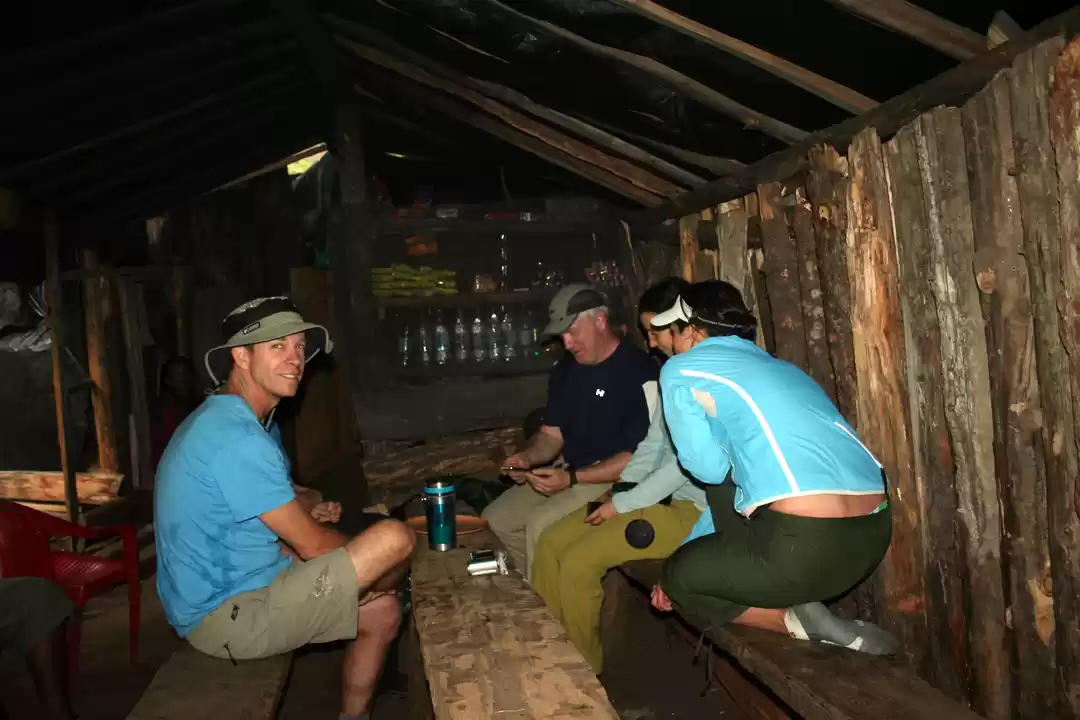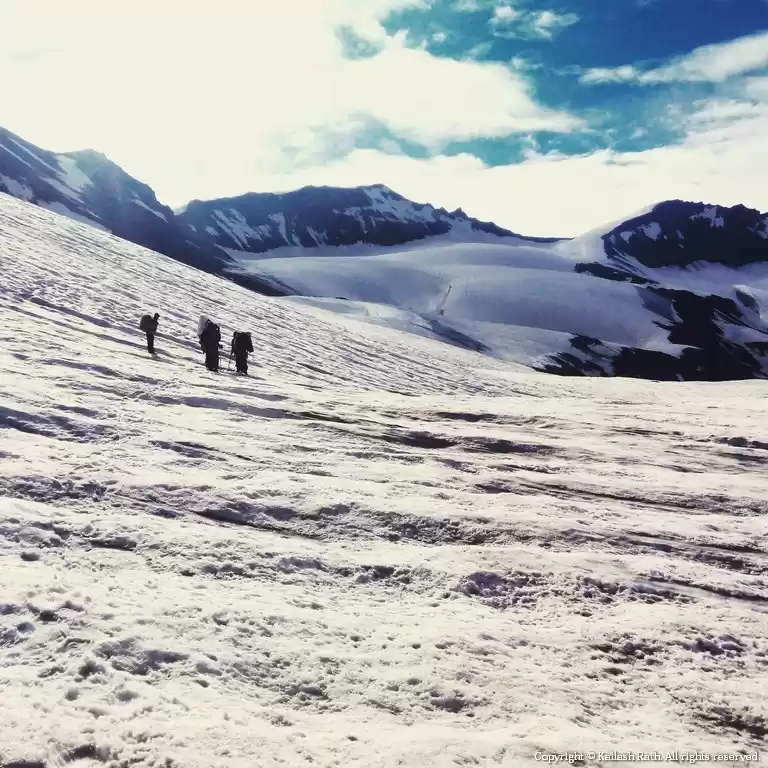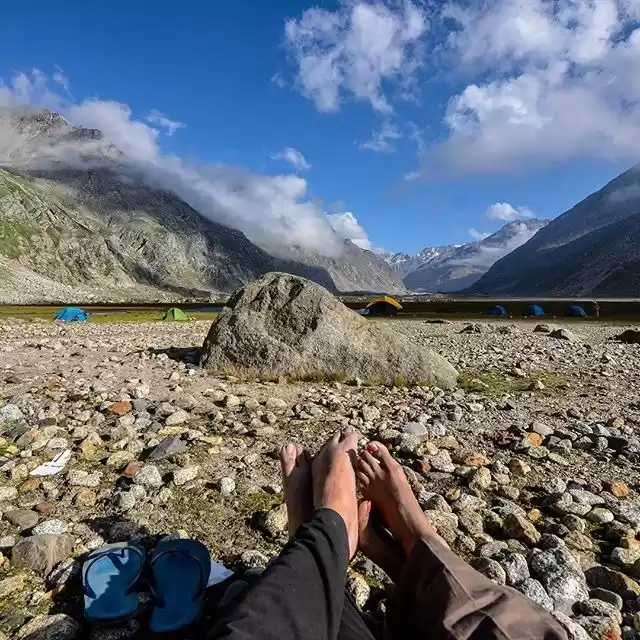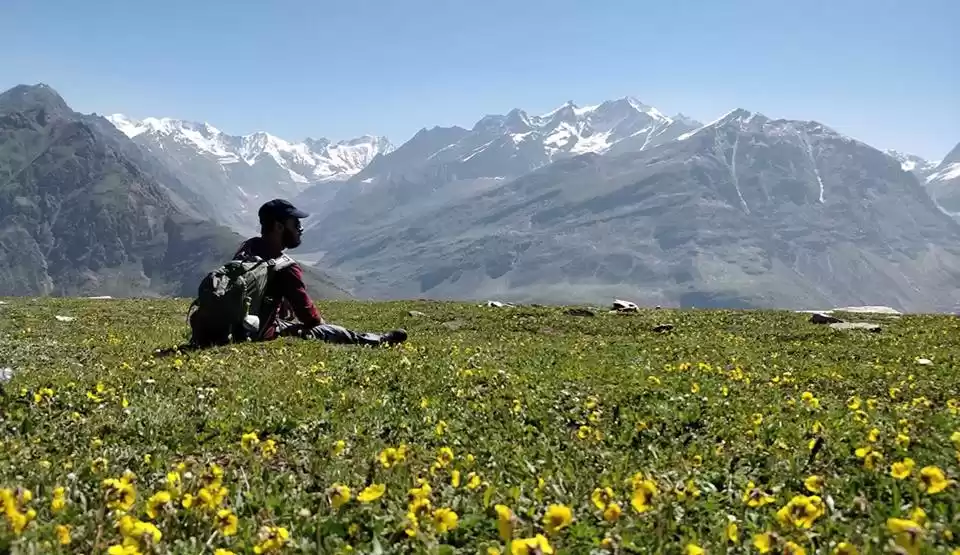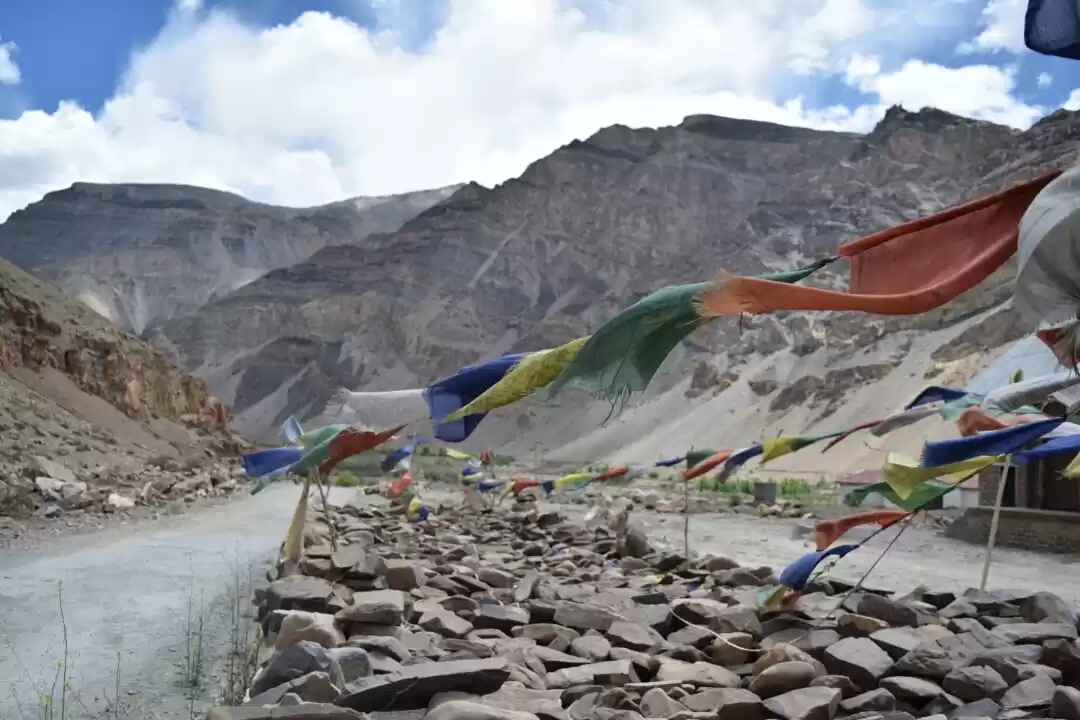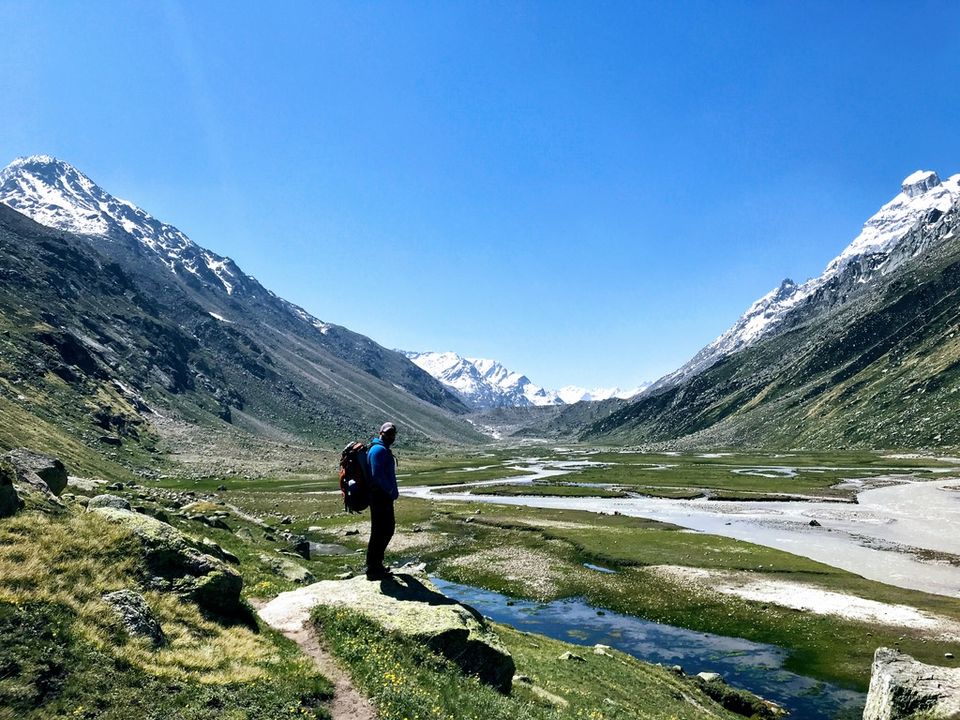
For our yearly pilgrimage to the Himalayas, Drupad, Raghav and I zeroed in on Pin Parvati Pass Trek. Despite not being as fit we were for our last trek to Mt. Kanamo and also reading adverse articles about the danger levels of Pin Parvati Pass Trek, we marched on with the plan.
Day 1 is an easy trek from Burshaini to Kheerganga. However, due to traffic snarls in Bhuntar and Manikaran, we only managed to begin the trek around 4pm. Having lost sunlight, we decided to make camp about 3km off from Kheerganga. This added more time to the already gruelling 16km trek for Tundabuj. On Day 2, just past Kheerganga you notice an instant shortage of human beings on the path and widening of the terrain and views. Gradually the tall trees give way to verdant valleys, feeder streams and creaky wooden bridges. Around 2 pm the clouds opened up and heavy rain started pouring on us. We quickly put on our rain gear (Ponchos and Rain cover for rucksack) but it wasn't of much help (Never settle for cheap equipment i.e. Decathlon, always get the good stuff). The rain made the terrain mucky and it became tough to get our footing. With every step we would have to struggle to stop the sliding. The rain finally let off around 4:30 pm but we were still far away from camp. Trekking in Parvati Valley is difficult, and with wet equipment and clothes weighing you down it is near impossible. We were completely spent by the time we reached Tundabuj which is an amazing expanse of green field perched in between mountains on both sides and rejuvenated waterfalls. Our trek guides from Hippie in Hills lit a bonfire at night and we managed to dry our clothes by hanging over the fire.

Having read about the dangerous boulder crossings, Day 3 worried me. The first of the boulders was relatively easy with enough cracks to cross over safely with good footing. The next one was a vertical ascend at about 80 degree and we managed this too. The third one was the toughest. There wasn't enough grip available and the Parvati was raging down below. We were assisted by the crew on the inclined slope and smooth rock. After this there is another rocky climb of about 100m. Though not dangerous, it is strenuous. All your mountain climbers in the gym are put to shame here. We ended Day 3 at Thakur Kuan at about 2pm, just when the rain started. Luckily, our tents were up before that. Having rested we played some Frisbee and Uno to pass the evening.
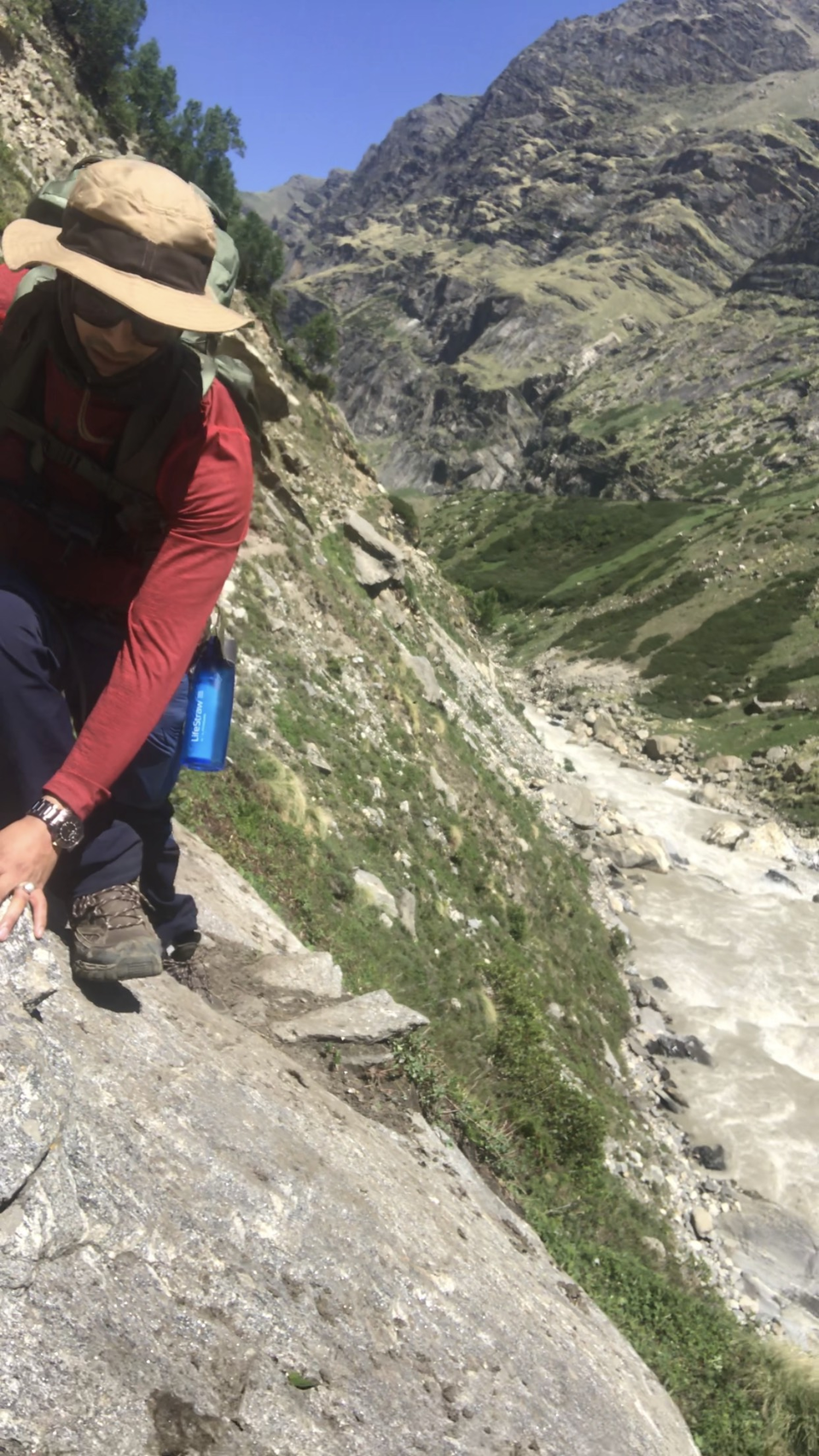
On Day 4, we felt re-energised having crossed the boulders and we started early. The highlight of the day is the crossing of Parvati from its right to left bank. This is executed by crossing a giant boulder called Pandu Pul. It also turned out to be quite dangerous. It's a lateral boulder with a steep drop and little footing. We navigated it with the assistance of our guides, who later told us the story of a trekker losing his grip last year (he was rescued by one of our guides). Post Pandu Pul, the terrain opens up into flat stretches with yellow flower beds. Camp was made at Odi Thach, where we met a team of trekkers who crossed over from Pin side. They told us that the crevices in the ice were filled by the recent snowfall (a matter of extreme worry if they hadn't). Extra sun hours were utilised to wash and dry clothes.
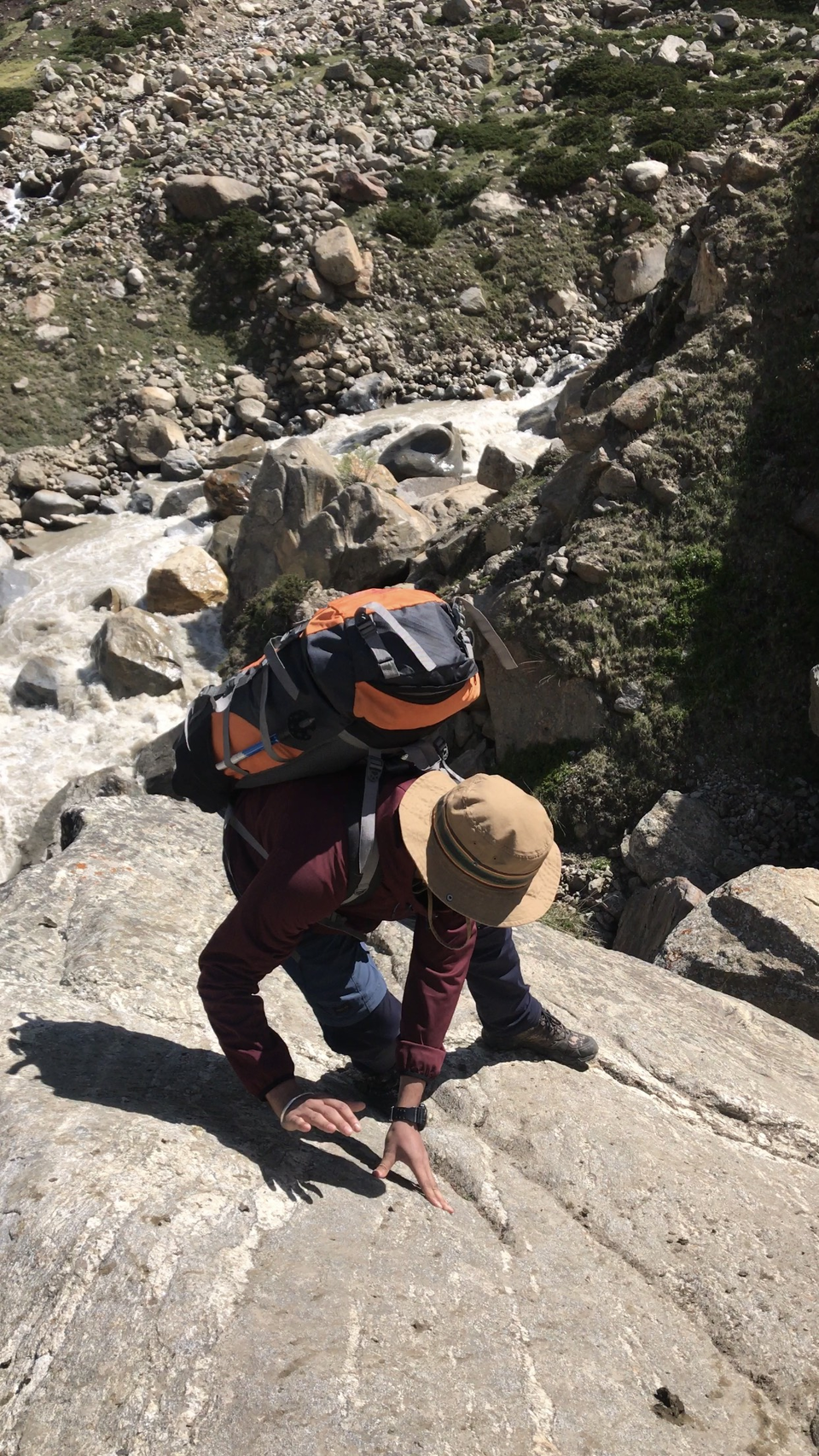
Day 5 is a welcome respite from the earlier strenuous sessions. Mostly a flat walk through open vistas, you get great views of the surrounding mountains as they rise tall beside you. Just before Mantalai Lake (source of river Parvati) was a small ice pocket that needed some manoeuvring. We camped on the farther end of Mantalai and took a dip in the not so chilly waters of the lake.

Day 6 is a straight climb of about 700m up from Mantalai Lake to Parvati Base Camp. We woke up to ominous clouds blocking the view of the mountains and we prayed that there be no rainfall today. Luckily, the sun shone through after an hour or so. We started ahead of the crew as always to save time (they usually caught up with us by mid day). There is an icy stream crossing in the beginning itself. It will numb your legs as the water is almost thigh high. As soon as the climb started we were on all fours trying to negotiate the tough incline and shifting landscape. The mountainside was steep with small rocks and glacial deposition. You have to be extremely cautious and slow here as with every step the rocks would fall down the mountain. So it was important to have a solid footing before going forward.
Upon reaching the snowline at around noon, we were quite smug at having completed the day so early. However, our guide suggested that we move further on to reduce the climb for the summit. Good thinking and we followed through. But little did we know that there was a snowstorm awaiting us. Even without the snowstorm, navigating the snowed mountain was extremely hard. With every step our foot was being dragged 3-4 feet under. We lost every last breath trying to get it out and got stuck with the other foot. Eventually, I decided to go on all fours which distributed my weight. It made life a lot easier but my clothes a lot wetter. But when the snowstorm started hitting our faces, I lost my composure and panicked. I was helped by the team who calmed me down and motivated me to keep moving forward. We were in a dire situation where the options were either to go back through the Parvati valley or risk the snowstorm on top of the pass. We decided to push on. The guides set up camp in the middle of blinding snow and we got into our sleeping bags to warm ourselves. The snow kept hitting us all through the night. No one was able to sleep as we had to take turns in beating the snow off our tents. There was no question of wandering outside to even go pee.
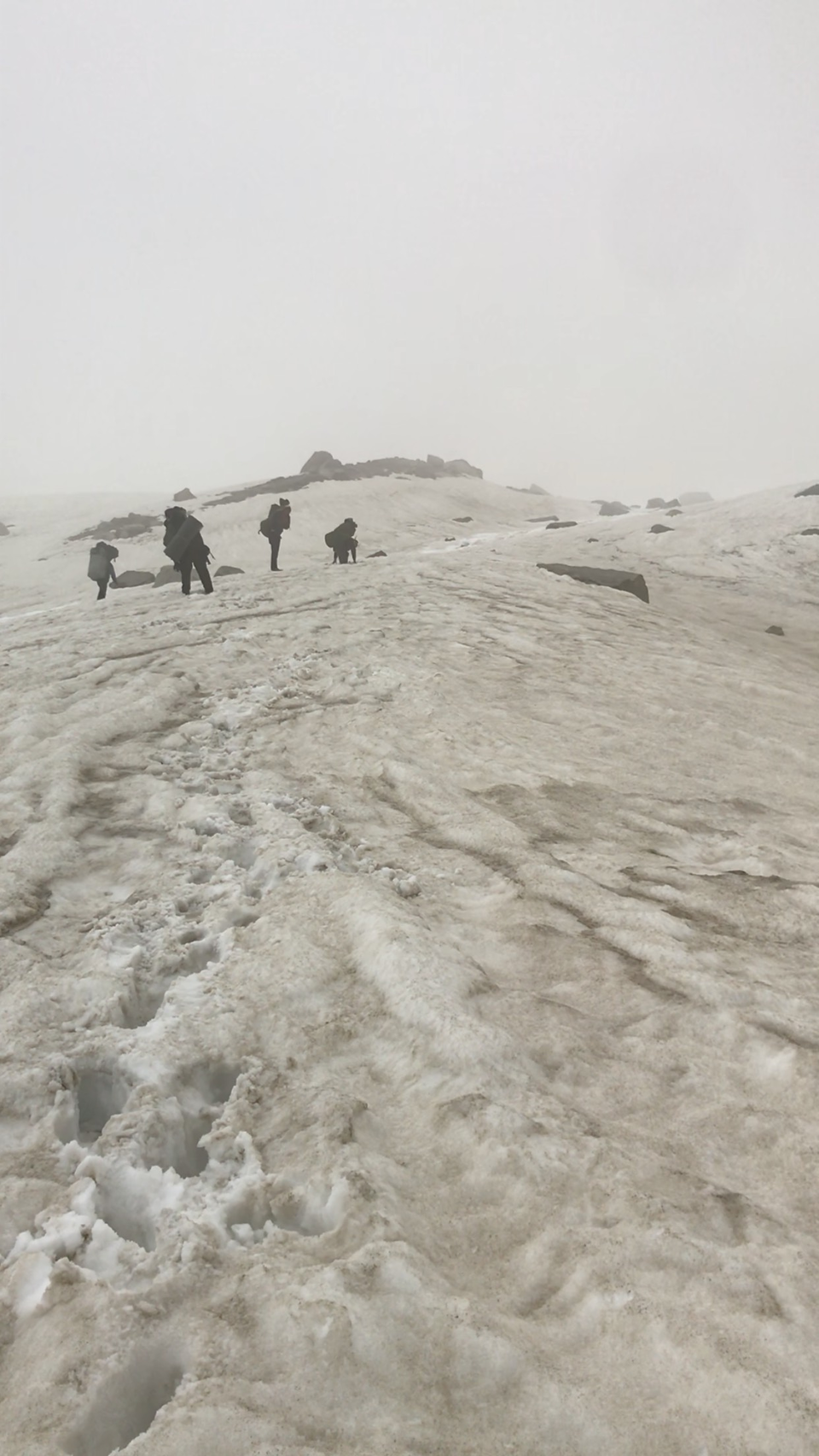
After a night contemplating mortality and little sleep, we came out of our tents around 3:30 am. The snow was still beating down but not as hard. The guide (Gaurav) must be complemented for keeping the spirits high. Nevertheless, we started off in icy cold and wet shoes and clothes for the final climb. After another hour, the snow receded but visibility remained poor. Fresh snow and thick ice made the trek easier than yesterday. However, due to poor visibility the guide lost his way and we could only move once the way became clear. Soon the pass was within sight. The last stretch is an almost vertical climb of a 100m. Egging each other on, we made the summit exhausted but exhilarated. The views of the valleys are magnificent beyond comprehension. The weather too honoured us by clearing for just enough time to take in the sights. This moment is what we endure for.
The climb is just half the job. We learned that the hard way as the descent to Pin Base Camp was no small task. Soft snow kept dragging us inside all the way down the mountain.
Day 7 is a long 24km trek from Pin Base Camp to Mud village. You begin the day with crossing the stream of water coming from Pin glacier right next to the camp. Rain and undulating terrain soon sapped our energies. Pin Valley is a desolate terrain with little life unlike Parvati Valley. There are numerous waterfalls to cross on this day and if you're not careful it's easy to slip on some rocks. Although mostly downhill, this day was uncharacteristically harder than I imagined. It's just a never ending walk. After about 10km there is a tractor road till Mud. Even after spotting Mud on the horizon it takes 4 hours to reach the village. Closer to Mud you can feel slowly etching back into civilisation as people start to greet you and ask about your trek. We reached Mud around 4pm and waited for all the team members to assemble over Maggi and Chai.
Pin Parvati Pass Trek is not for the faint hearted. It is an endurance run with twists and turns. You need to adapt and overcome the situation. Having a great guide is an absolute necessity and we were not let down on that end. You need to have good fitness levels and great equipment to make your life easy. In the end remember, The Summit is You.





